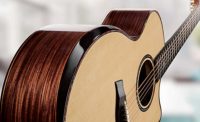For more than 5,000 years, investment casting has produced a wide variety of metal products. The process is currently used to manufacture everything from surgical implants to jet engine turbine blades.
Known also as lost-wax casting, it begins in the wax room, where a wax pattern of the product is created using a wax-injection machine. This pattern is then attached to a runner and dipped in a ceramic slurry in a shell room. After the slurry dries, the wax is melted and removed. This leaves a perfect mold, which is subsequently filled with a molten metal. Once the metal hardens, the ceramic shell is removed to reveal a perfect metal copy of the original wax pattern.
Poughkeepsie, NY-based MPI Inc. has made wax- and ceramic-injection machines for foundries and casting shops worldwide since 1972. The company also produces automated injection and assembly systems, and performs contract pattern injection and assembly work.
Traditionally, the investment casting process was done manually, although, in recent decades, foundries have used robots in shell rooms to ensure consistent assemblies and limit scrap. Using robots in wax rooms, however, is much less common, notes Bruce Phipps, founder and owner of MPI, because robots are often expensive and complex, and many of MPI’s customers handle very low-volume jobs.
Nonetheless, Phipps understands that these companies highly value product standardization through automation. So in early 2005, he decided to develop a fully automated wax room system. After collaborating with Rensselaer Polytechnic Institute and the New York State Energy Research and Development Authority, MPI introduced the Model 20-10 Automated Pattern Assembly System that October. It featured two three-axis Cartesian robots.
Several years later, Phipps decided to upgrade the system and expand its capabilities by replacing the Cartesian robots with IRB 2600 six-axis robots from ABB Robotics. The Model 20-14 system hit the market in the summer of 2013.
“We worked closely with ABB to develop unique programming that allows us to accomplish wax welds that were previously unattainable,” explains Phipps. “This has led directly to incredible successes with major customers in the aerospace industry.”
According to Phipps, the 20-14 welds 25-percent-larger wax assemblies. It also increases casting yields by 10 to 30 percent, depending on the application, and is capable of multiplane welding for advanced products such as single crystal (high working temperature) turbine blades.
Compared with manual wax pattern assembly, the automated system creates flawless, high-quality fusion welds 100 percent of the time, and does this two to five times faster. Phipps also likes that a worker can be trained how to operate the system in less than one day.
“True automation returns come from equipment repeatability and reliability,” says Keith Hedrick, automation engineering manager at MPI. “[Our] robots work each and every day, and they make the products exactly the same each and every time.”
Three versions of the 2600 are available and have a handling capacity of 12 or 20 kilograms. Two feature a short arm (1.65 meters) that handles either load capacity, while the other has a longer arm (1.85) for a 12-kilogram payload. All models can be mounted on the floor, at an angle, on a wall, inverted or on a shelf.
For more information on compact six-axis robots, call 248-391-9000 or visit www.abb.com/robotics.








